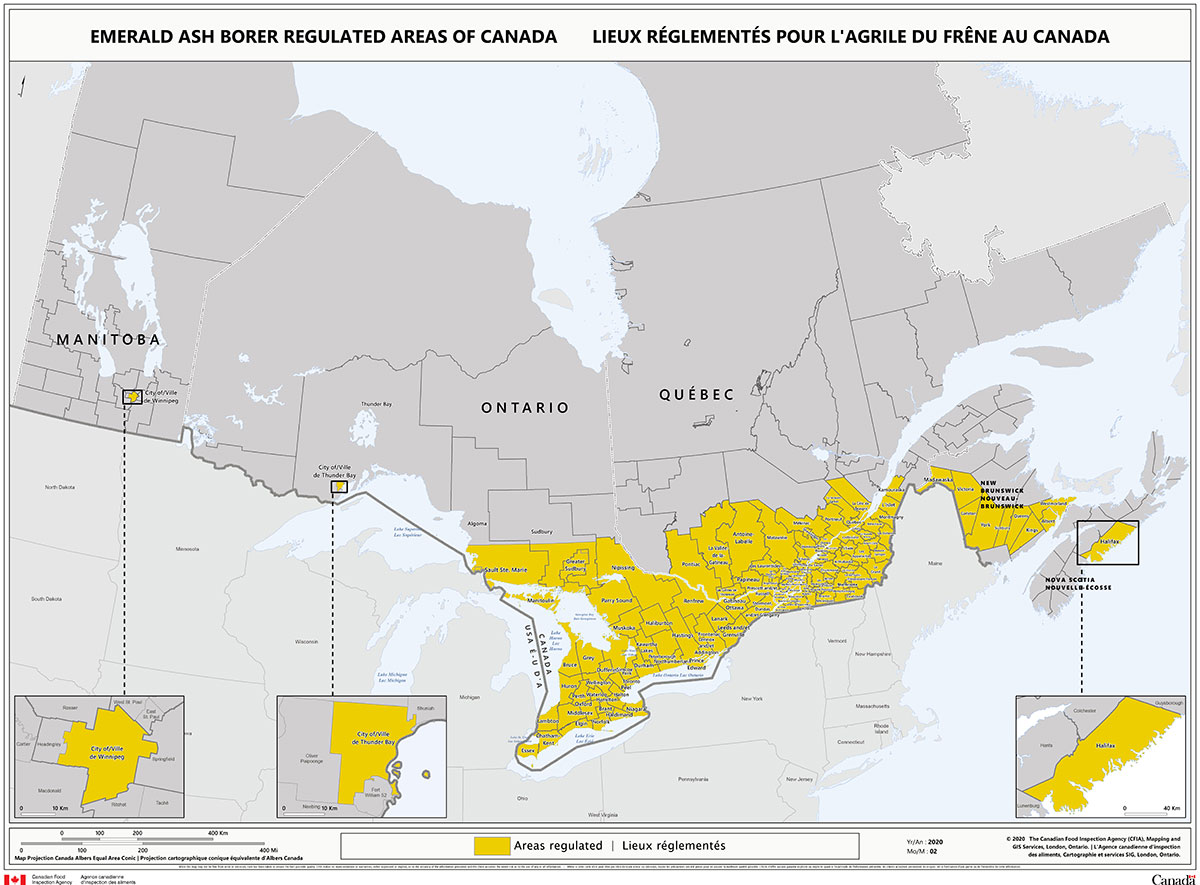Events Calendar
Current Weather
Firewood and Firewood Restrictions
To prevent the spread of forest pests both within and between provinces, and countries, it is strongly recommended that visitors buy and burn local firewood. Firewood can be purchased within Algonquin Park (see below) or at local businesses outside the boundaries of Algonquin Park.
Visitors are prohibited by law from moving firewood from a regulated area. The Canadian Food Inspection Agency works to limit the movement of firewood to prevent the spread of invasive species, such as the Emerald Ash Borer, Gypsy Moth, Hemlock Woolly Adelgid, and Dutch Elm Disease. Upon your departure from Algonquin Park, please leave behind any left over firewood. This will help stop the spread of any unwanted pests. Please remember - Don't move firewood!
Ontario Parks Firewood Prices
Firewood is sold by the bag at Algonquin Park developed campground offices by Ontario Parks
- $10 per bag, hardwood
- $7 per bag, kindling
Don't Move Firewood
Would Algonquin Park be the same without its trees? Bringing firewood from home to the place you’re camping could put your favourite campsite and Algonquin Park in danger.
Firewood often contains insects and plant diseases that can put Algonquin Park's native plants and animals at risk. Campers who bring firewood from home may accidentally spread those insects and diseases could threaten Algonquin Park and beyond. Please protect Algonquin Park and its vast forests. Don't move firewood!
How You Can Help
- Don't move firewood - Moving firewood, even just a few kilometres, can spread invasive species to our forests. It might seem difficult to imagine, but something as simple as bringing your own firewood when you travel to or from your favourite campsite could threaten and destroy thousands, even millions, of trees.
- Burn it where you buy it - Don't take unused firewood home, it too can move forest pests long distances.
- Don't bring other plant products to Algonquin - The movement of infested plant materials such as nursery stock, trees, logs, lumber and wood or bark chips poses the greatest risk of spreading invasive insects to uninfested areas, like Algonquin Park.
- Learn the invasive species and symptoms - Learn the signs and symptoms of infested trees and report any issues to the Canadian Food Inspection Agency or Algonquin Park staff.
- Know the rules - Quarantine areas have been imposed which prohibits the movement of plants materials including firewood in many areas of Canada and the United States (see below for details).
Protecting Algonquin Park
Emerald Ash Borer - An Unwanted Pest
 Since its accidental introduction into the United States and Canada in the 1990s, and its subsequent detection in 2002, the Emerald Ash Borer (Agrilus planipennis) has spread to 14 states and parts of Canada. It is estimated to have killed at least 100 million ash trees so far and threatens to kill most of the 7.5 billion ash trees throughout North America.
Since its accidental introduction into the United States and Canada in the 1990s, and its subsequent detection in 2002, the Emerald Ash Borer (Agrilus planipennis) has spread to 14 states and parts of Canada. It is estimated to have killed at least 100 million ash trees so far and threatens to kill most of the 7.5 billion ash trees throughout North America.
In North America, the Emerald Ash Borer has been found to attack and kill all North American species of Ash (Fraxinus spp.). Infested ash trees in North America generally die after two to three years, but heavily infested trees have been observed to die after only one year of beetle attack.
The Emerald Ash Borer is native to China and eastern Asia. In May 2002, it was discovered in southeastern Michigan in the United States and in July 2002 it was found in Essex County in Ontario.
Like some other exotic pests that affect plants and trees, it is believed to have been accidentally introduced to North America in imported wood packaging or crating material.
A regulated area for Emerald Ash Borer exists in much of Ontario, Quebec, and New Brunswick (see below for details).
Regulated Areas for Emerald Ash Borer
Related Information
Reserve your developed or backcountry campsite for your next visit.
Share your passion for Algonquin Park by becoming a member or donor.
Special regulations for Algonquin's special fishery.










